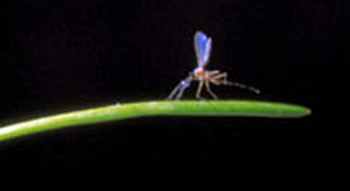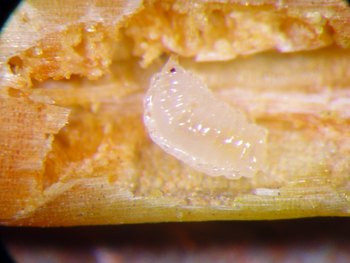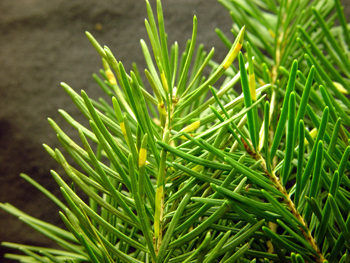Douglas-fir needle midge emerging – time for control
Douglas-fir needle midge larvae cause galls to form on current-year needles. Even moderate needle loss can reduce the value of Christmas trees.
Douglas-fir needle midge has begun to emerge in the Cadillac area. These midge over-winter as larvae in soil under infested trees. The adults are a small fly, about the size of a mosquito and emerge in the spring (around 200-225 GDD50). They live only a couple of days, just long enough to mate and lay eggs.

Douglas-fir needle midge adult. Photo credit: USDA Forest Service, Bugwood.org
The orange eggs are deposited in expanding buds and on elongating needles. Larvae hatching from the eggs immediately bore into the needle, causing elongating needles to form a gall around the larvae. One or more white maggots can be found inside affected needles during the summer.

Douglas-fir needle midge maggot in needle. Photo credit: Howard Russell, MSU Diagnostic Services
At the site of the gall, the needle is frequently bent. The damaged area is initially pale-yellow, but as the season progresses, will darken and eventually turn brown. This damage can look similar to Rhabdocline needlecast or Cooley spruce gall adelgid. Even moderate needle loss can reduce the value of Christmas trees and heavily damaged trees may be unsalable.

Damage to needle from Douglas-fir needle midge. Photo credit: Howard Russell, MSU Diagnostic Services.
Insecticides can be used to control Douglas-fir needle midge, but timing the application is critical. Time your insecticide application within a week of adult emergence of the adults. For more information, consult MSU Extension’s Douglas-fir Needle Midge fact sheet, or watch the Douglas-fir needle midge video.



 Print
Print Email
Email


